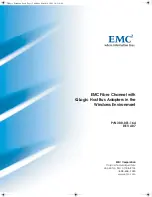
CAN232 FD User Manual
3-11
Examples
Example #1
:S123N12345678;
This message string indicates a 11-bit identifier whose value is $123, is normal, and has four data bytes: $12
$34 $56 and $78.
Example #2
:XF00DN;
This message string indicates a 29-bit identifier whose value is $F00D, is normal, and has zero data bytes.
Example #3
:X12345678H0102030405060708090A0B0C;
This message string indicates a 29-bit identifier whose value is $12345678, is normal CAN FD with BRS,
and has twelve data bytes: $01 $02 $03 $04 $05 $06 $07 $08 $09 $0A $0B and $0C.
3.1.1.2 RTR CAN Message
A RTR CAN message consists of the type (11-bit or 29-bit), identifier, CAN type, length, does not have any
data bytes, and is encoded as follows:
RTR CAN Message Syntax
: <S | X> <IDENTIFIER> <R> <LENGTH> ;
The first character ,‘:’, is for synchronization and allows the CAN232 FD parser to detect the beginning of a
command string.
The following character is either ‘S’ for standard 11-bit, or ‘X’ for extended 29-bit identifier type.
The ‘IDENTIFIER’ field consists of from one to eight hexadecimal digits, indicating the value of the
identifier. Note that if a 29-bit value is entered and an 11-bit value was specified, the command will be
treated as invalid and ignored.
The character ‘R’ indicates that the message is a RTR transmission. The CAN FD specification does not
support Remote frames.
The ‘LENGTH’ field is a single ASCII decimal character from ‘0’ to ‘8’ that specifies the length of the data
being requested.
The terminating character ‘;’ signals the end of the message.
Examples
Example #1
:S123R8;
This message string indicates a 11-bit identifier whose value is $123, is RTR, and has length 8.
Example #2
:XF00DR0;
This message string indicates a 29-bit identifier whose value is $F00D, is RTR, and has length 0.
Summary of Contents for CAN232 FD
Page 1: ...CAN232 FD User Manual Revision B January 13 2020 ...
Page 2: ......
















































